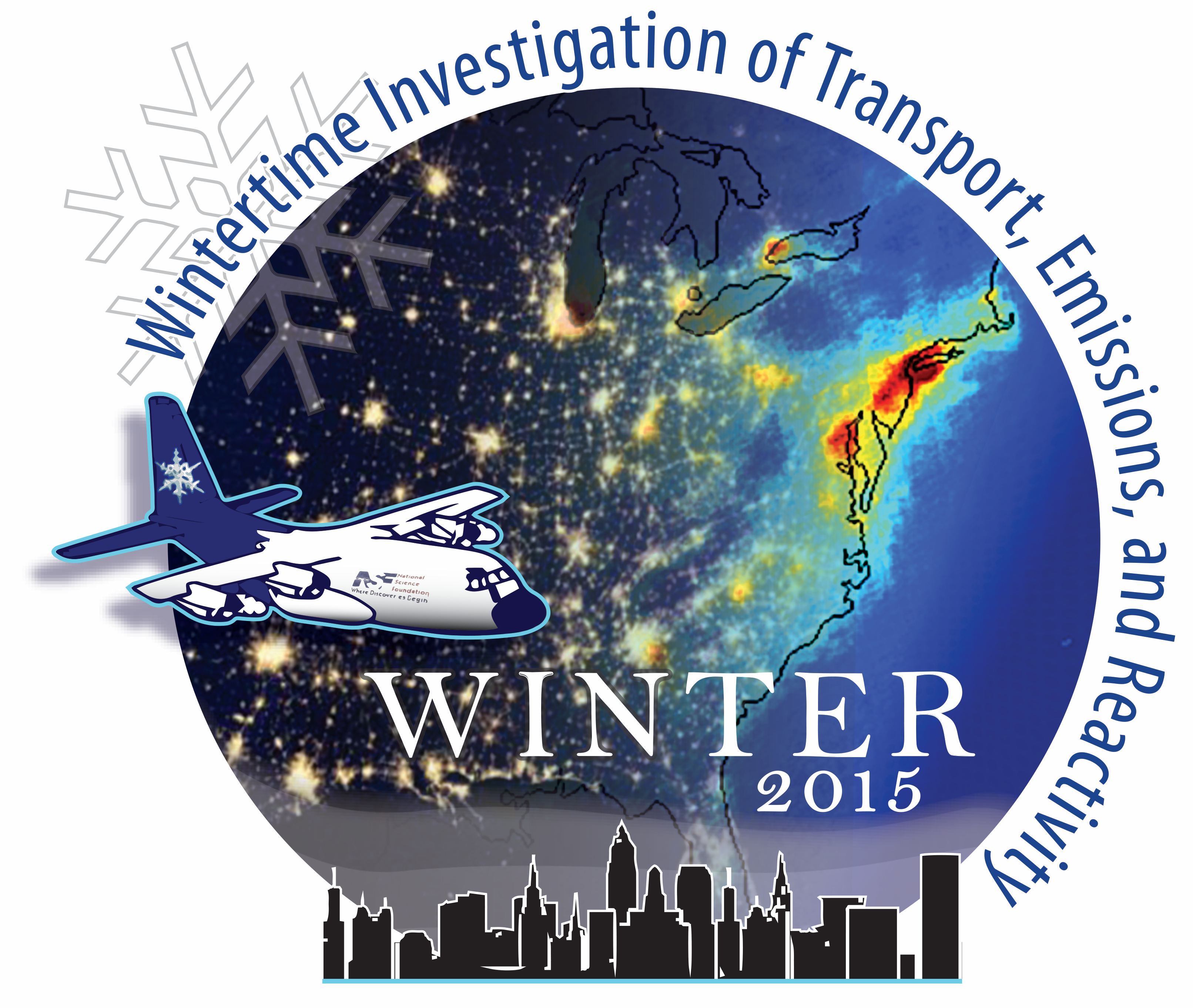WINTER
Wintertime Investigation of Transport, Emissions, and Reactivity
 WINTER was an atmospheric chemistry campaign that focused on wintertime emissions and chemical processes in the Northeastern US. The project had three goals:
WINTER was an atmospheric chemistry campaign that focused on wintertime emissions and chemical processes in the Northeastern US. The project had three goals:
(1) to characterize the chemical transformations of wintertime emissions with an equal focus on nocturnal and multiphase processes as on photochemistry;
(2) to assess the dominant mechanism of secondary aerosol formation and quantify the geographical distribution of inorganic and organic aerosol types during winter; and
(3) to provide constraints on wintertime emission inventories for urban areas, power plants and agricultural areas, and characterize the export pathways of primary pollutants to the North Atlantic.
WINTER used the NSF/NCAR C-130 based at NASA Langley in Hampton, VA to address these goals. Operation of the C-130 during winter in the Northeastern U.S. allowed comprehensive sampling, in one campaign, of 1) large urban/industrial plumes of nitrogen oxides, VOC, and sulfur from the Northeast corridor as it is advected off the coast, 2) coal-fired power plants throughout the eastern U.S. including the Ohio River Valley and along the East Coast, and 3) distributed emissions from oil and gas extraction, agricultural or biofuel burning, and vegetation in the mid-Atlantic and southeast U.S.
Principal Investigators:
Joel Thornton University of Washington
Steven Brown NOAA
Lyatt Jaegle University of Washington
Jose-Luis Jimenez University of Colorado
Ronald Cohen UC Berkeley
Rodney Weber Georgia Tech
Project Manager:
Cory Wolff NCAR/EOL
Data Manager:
EOL Archive NCAR/EOL/DMS

